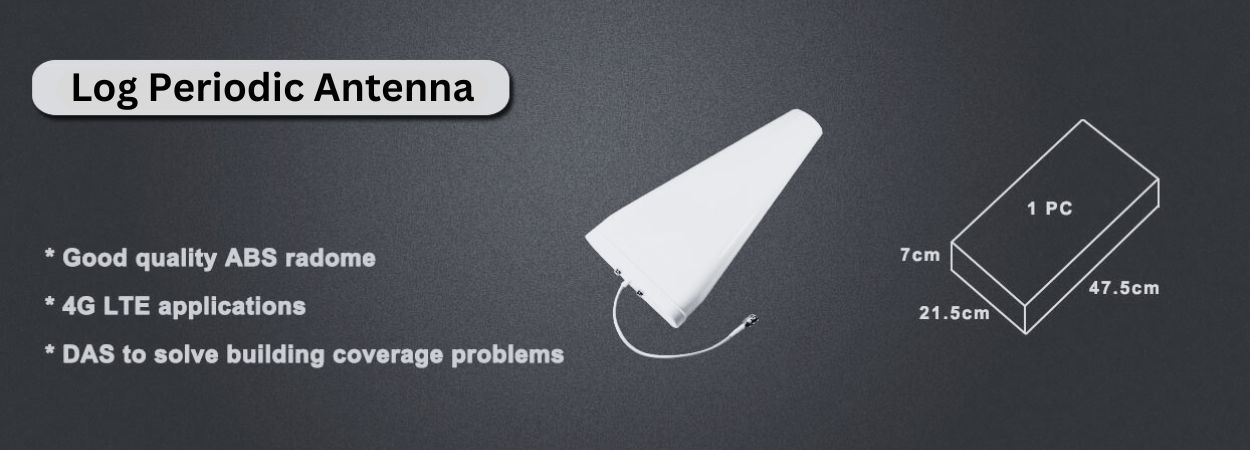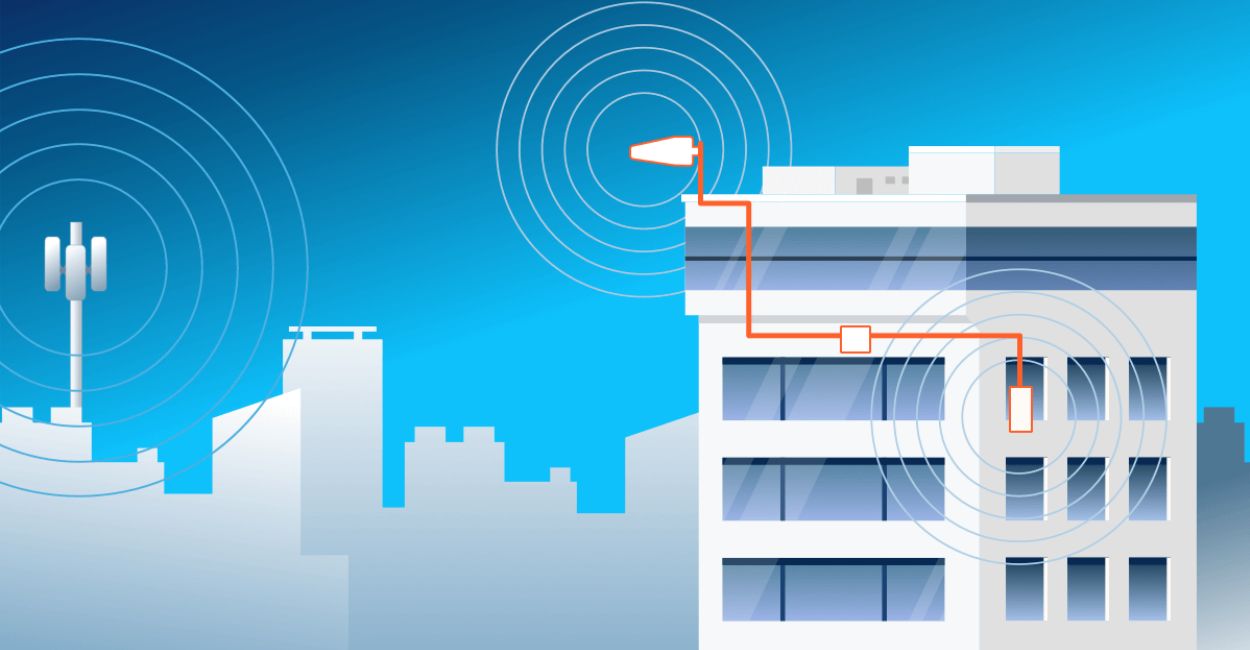2025-03-15 15:36:39
698 - 960 MHz / 1710 - 2700 MHz / 3300 - 6000 MHz with 11 dBi Gain Log PeriodicAntenna, HV-pol, N Female

With a set gain of 11 decibels isotropic (dBi), 11dbi log-periodic antenna is a form of Directional Antenna intended to concentrate and focus wireless signals in a particular direction.
What is the 11dbi Log Periodic antenna Design?
Like other log periodic antennas, an 11dBi log periodic antenna is designed using a geometric configuration of dipole elements with different lengths. The antenna can function over a broad frequency range with good gain because of the precise arrangement of its antenna parts. The following are a log periodic antenna's primary design elements:
Element Geometry: A sequence of dipole elements makes up log periodic antennas. Usually composed of conductive materials, these components are organized in a comb-like structure. The elements are arranged so that the farther you are from the antenna's feed point, the shorter they get.
Element Spacing: To preserve the intended performance characteristics, the distance between the dipole elements varies. In order to guarantee that the antenna maintains a constant impedance throughout the frequency range, spacing is an essential component of the design.
Feed point: the location where the RF (radio frequency) signal is connected to the log periodic antenna. In order to transmit or receive signals, a coaxial cable or transmission line is usually attached to the antenna at this location.
Balun: To guarantee that the antenna can be effectively linked to an unbalanced coaxial cable, many log periodic antennas have a balun (balanced to unbalanced transformer) at the feed point.
Reflector and Directors: To further enhance the gain, directivity, and radiation pattern of the antenna, certain log periodic antennas have extra reflector and director components in front of and behind the dipole elements. The performance of the antenna is influenced by these other components.
Hardware for Mounting: In order to guarantee directional coverage, log periodic antennas are made to be installed in a particular orientation. To aid in correct installation, mounting hardware or a support structure is frequently incorporated into the antenna design.
The intended frequency range and performance attributes are used to determine the precise measurements, element lengths, and spacings of the dipole elements in an 11dBi log periodic antenna. Developing an antenna that can effectively send or receive signals across a broad frequency range while reaching a predetermined gain—in this example, 11dBi—is the aim.
What Are the Benefits of Using 11dbi Log Periodic Antennas?
The 21st-century market has been completely transformed by wireless Internet. We utilize it on our TV or laptop. We converse with our family, watch movies, and listen to music. Actually, there are countless opportunities available to us on the Internet. Does the signal strength in every part of your house fulfill your demands, even though wireless internet is already widely accessible and pervasive worldwide? Undoubtedly, we continue to struggle with distractions that hinder our ability to use the internet in a comfortable manner.
We have the ideal answer. The 4g lte antenna from RFLINK will greatly enhance the quality of the data that is sent to your smartphone.
With its high gain and low VSWR, this 698-2700MHz 11dBi Log Periodic antenna is ideal for distributed antenna systems (DAS) that aim to address issues with building coverage. As a crucial component of the DAS system, it can receive signals from a distance and resolve 4G LTE, 3G, and 2G signal reception issues while also assisting users with communication issues.
High-quality ABS radome, coaxial cable, and a pure copper N-Female connector are used in this antenna. For many years, consumers in the US, India, Canada, and Europe have preferred it due to its dependably high quality.
Additionally, this 11dbi log periodic antenna has a wide and stable band because it is equipped with a high-quality ABS radome that blocks wind, sun, and rain.
What are the Components of the 11dbi Log Periodic Antennas?
The ABS radome, N-Female connector, and 30cm cable are the three primary components of the 11dbi log periodic antennas. Cable length, connector type, and cable type are among the accessories that can be customized. The connector is compatible with N-Female, N-Male, and RP-SMA Male.

This log periodic antenna, which operates between 698 and 6000 MHz, is a strong and adaptable solution with many uses in the field of contemporary communication technology. The 11dbi log periodic antenna has the following primary uses:
Applications for Low-Power Wide-Area Networks (LPWANs): The log periodic antenna is a great option for LPWAN technologies because it can function in the 698–6000 MHz frequency range. Long-range, low-power communication is the foundation of LPWAN networks like LoRa (Long Range) and NB-IoT (Narrowband Internet of Things). Applications like smart city infrastructure, agricultural monitoring, and industrial automation are made possible by the antenna's broad frequency coverage, which guarantees dependable and energy-efficient connectivity for IoT devices spread across extensive regions.
Cellular Networks: The 698–6000 MHz frequency range is used by cellular networks, which include LTE-M (Long-Term Evolution for Machines) and several 4G/5G bands. These frequencies must be covered by the log periodic antenna in order to maximize cellular connectivity, guarantee effective data transfer, and enable applications like voice services, video streaming, and mobile broadband.
Distributed Antenna Systems (DAS): To improve wireless coverage both indoors and outdoors, DAS systems need antennas that can efficiently disperse and amplify signals across a specified region. For DAS deployments, the 698-6000 MHz log periodic antenna is a great option since it provides better connectivity in public areas, office buildings, stadiums, and other busy places.
Uses of IEEE 802.11b/g WiFi: The log periodic antenna can be a dependable way to increase WiFi signal strength and coverage in places like homes, workplaces, and public areas where WiFi connectivity is crucial. The antenna is a useful tool for improving wireless network performance because it works with the 2.4 GHz band (802.11b/g).
Public Safety Communications: For public safety organizations like police, fire departments, and emergency responders, effective communication is essential. Because of its wide frequency coverage, the log periodic antenna can handle a number of communication protocols, which helps to build strong and effective public safety networks.
